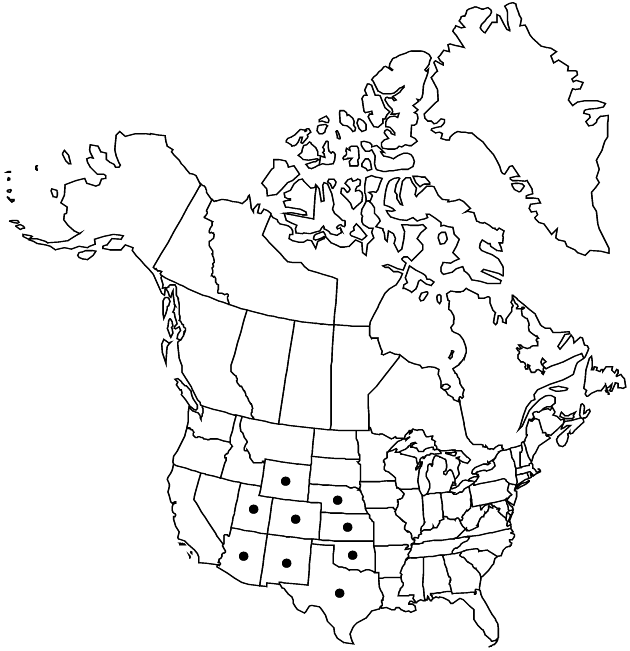Pectis angustifolia var. angustifolia
Annuals, 1–20 cm; herbage lemon-scented. Leaves (crowded at stems tips) 10–45 × 1–3 mm, bases of distal blades notably expanded. Peduncles mostly 1–10 mm (often wholly or partially concealed by bases of subtending leaves). Phyllaries linear, 2.5–5.5 mm, widths ± uniform throughout, each with 1–2 subterminal oil-glands 0.2–0.5 mm plus smaller, submarginal oil-glands. Cypselae 2.5–4 mm; pappi usually coroniform, 0.1–0.3 mm (plus 1–7 awns or bristles in some Texas populations). 2n = 24 (as P. cf. texana).
Phenology: Flowering Jul–Oct.
Habitat: Deserts, grasslands, woodlands, sand bars, roadsides
Elevation: 300–2300 m
Distribution

Ariz., Colo., Kans., Nebr., N.Mex., Okla., Tex., Utah, Wyo., Mexico (Chihuahua), Mexico (Coahuila), Mexico (Durango)
Discussion
Variety angustifolia intergrades with var. tenella across a broad front from southern Texas to eastern Durango. It is locally sympatric and occasionally hybridizes with Pectis papposa var. grandis from southern New Mexico and western Texas to eastern Durango. Forms of var. angustifolia with a pappus of 1 or more awns in addition to the usual low crown have been called var. subaristata A. Gray and may represent introgression from either var. tenella or P. papposa var. grandis.
Selected References
None.